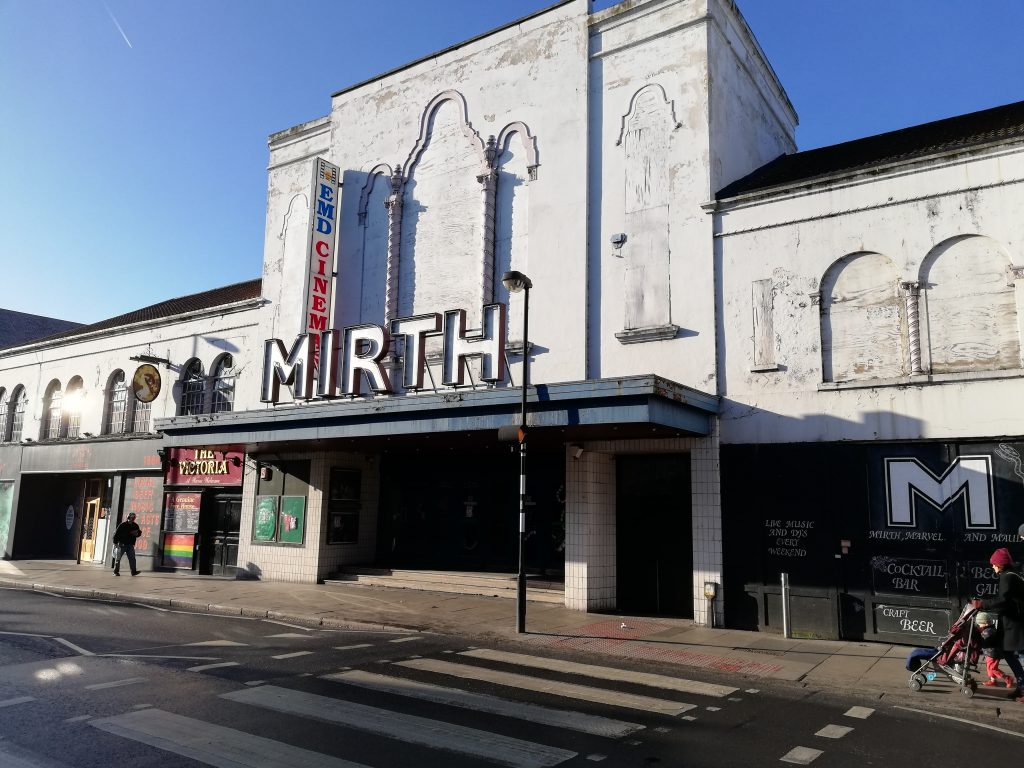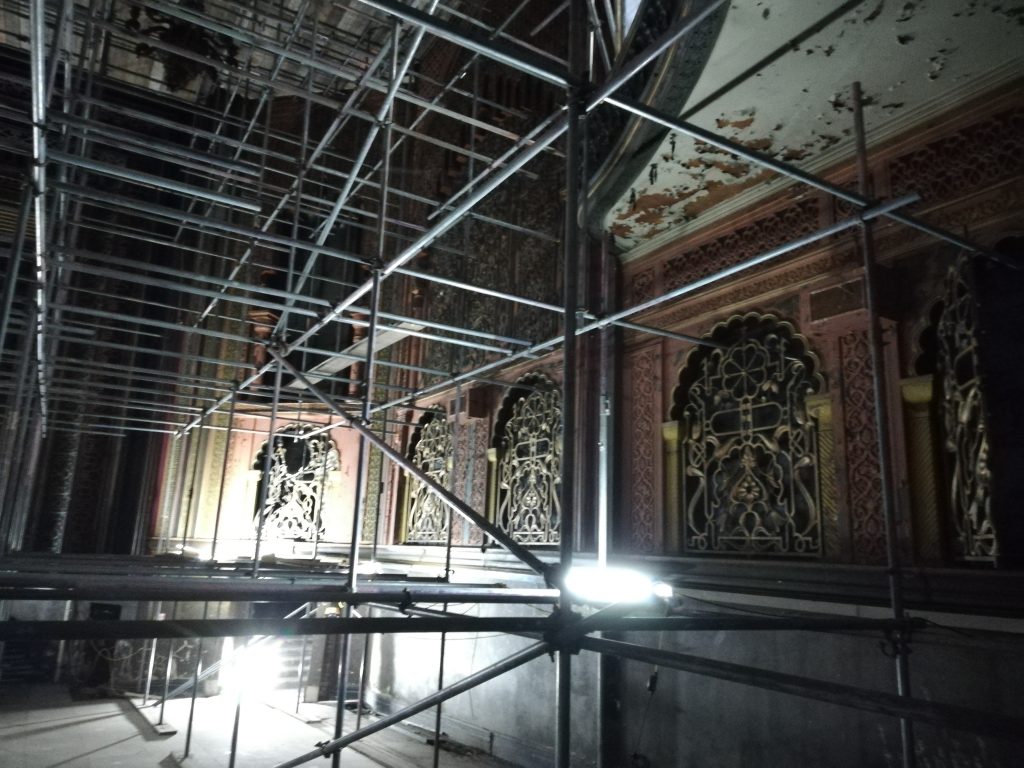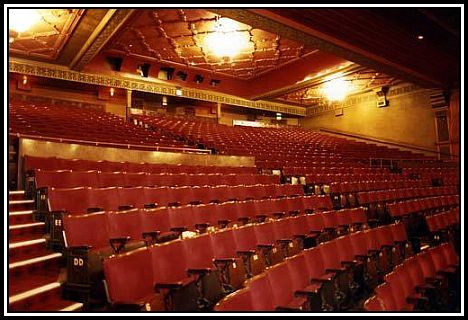EMD Cinema
The Granada Theatre Walthamstow

History of the Granada Theatre Walthamstow
The cinema was built on the site of the Victoria Hall built in 1887. In 1896 it screened one of London’s first film shows. In 1907 it was renamed the Victoria Picture Theatre. The young Alfred Hitchcock attended screenings.
The existing cinema was designed by the architect Cecil Aubrey Masy and the world-famous Russian director and designer Theodore Komisarjevsky. The 2,697-seater opened on 15th September 1930. The main interiors were decorated in a ‘Hollywood style’ inspired by Moorish architecture and Spanish 17th century Spanish Baroque, Komisarjevsky’s had admired on a trip to the Alhambra Palace in Spain. The Granada’s large foyer was fitted with huge mirrors, a marble floor and extravagant chandeliers while the main auditorium boasted colourful Moorish-inspired arches and grill-work.
The furniture in the foyer areas was designed especially for the cinema by Komisarjevsky. The cinema owner Sidney Bernstein insisted that the beautiful interior should be decorated with fresh flowers each day. The cinema was designed to present a mixture of films and live performances and was therefore equipped with an expensive purpose-built Christie cinema organ and first-rate stage facilities.
The cinema opened on 15th September 1930 with a screening of Sydney Howard’s comedy ‘Splinters’ and performance by Barber & His Band and an organ recital by ‘Mr. & Miss Smith’, aka organists Charles Willis and Josie Bradley playing on the two 3Manual consoles, one in raised from the orchestra pit and another on the stage level.

Later Alterations
The cinema suffered minor bomb-damage during WWII. It was thought that the original mirrors were replaced at this time (but recent research suggests they are original, and the frames were modified c.1960). The cinema closed for three weeks for repair. It continued to screen films throughout the war and was used as an ad hoc air raid shelter – and the foyer as a mortuary.
Although the Granada Theatre Walthamstow received its new screen in 1953, it was not fully used, as the projectors lacked the correct aperture plates necessary. As time went on it was found that if the film was non-CinemaScope, there was room to leave the console on the side of the stage without blocking the screen, so the organ was occasionally used to play in the audience before the show.
At some date after WWII the main auditorium and foyer of the cinema underwent a radical refitting, removing some of the original Komisarjevsky elements and overpainting geometric designs on the walls of the ground floor auditorium and ‘trompe l’oeil’ decoration in the foyer.
The venue was increasingly used for live music and the orchestra pit being covered over for live events. The Beatles performed at the Granada on two occasions, in 1963 and 1964. The cinema never became a bingo hall. From 1968 the upper circle was used for screenings and the stalls were reserved for live shows.

General Recommendations
The limited scope of the investigation means that many important elements such as the ceiling have not been investigated. However something of the tonality of Theodore Komisarjevsky’s original scheme has been identified.
He made great use of gold paint toned with tinted glazes and sometimes applied gold paint over coloured grounds (green and yellow). Wall faces in the rear of the stalls and the gallery and the foyer were lined in imitation of stone blocking and decorated in white/cream toned with thin layers of paint (probably a glaze).
A great deal of the original fittings are still in place – but areas such as the doors flanking the stage and balcony side walls was have been extensively altered.
The most significant discovery is the Moorish pattern applied to the dado walls of the main auditorium. It is suggested that a larger section of the pattern is revealed to enable the design to be appreciated. But the presentation of this scheme is problematic and requires careful consideration and much wider discussion bearing in mind that the cinema was listed Grade II* because of the importance of Theodore Komisarjevsky’s work.
One option may be to uncover a section of the design and use the information to recreate a copy of the scheme. However, this option may limit the future use of the space. Whatever option is decided it must ensure the long-term preservation of this significant scheme whether it is exposed or retained under the two later decorations, so that it might be appreciated by future generations.
